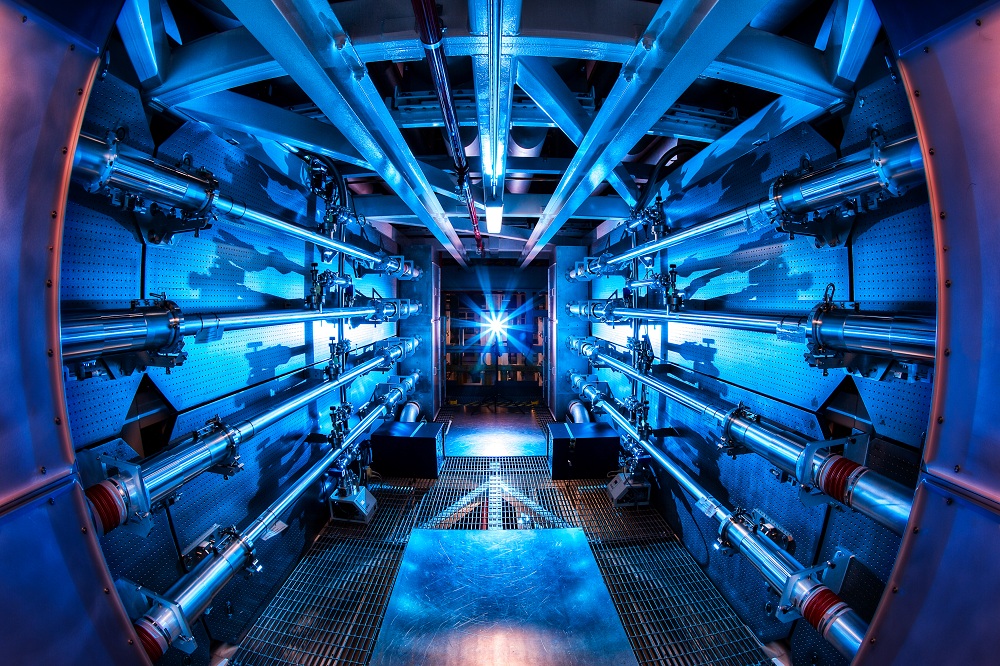Record-Breaking Laser Shot Paves Way to Fusion Energy

A U.S. fusion lab has made a record-shattering laser shot that focused a cluster of lasers on a single target like a mini Death Star. The new record for the highest-power laser shot paves the way for the lab's efforts to create sustainable fusion energy, similar to what takes place in the fiery heart of stars.
The National Ignition Facility (NIF) delivered more than 500 trillion watts (terawatts or TW) of power during its historic test shot on July 5 — about 1,000 times more power than the entire United States uses at any given time. That power came from 1.85 megajoules of energy that represent about 100 times as much as what any other laser can sustain.
"The 500 TW shot is an extraordinary accomplishment by the NIF Team, creating unprecedented conditions in the laboratory that hitherto only existed deep in stellar interiors," said Richard Petrasso, a physicist at the Massachusetts Institute of Technology.
Each of the 192 lasers fired within a few trillionths of a second of each other at the Lawrence Livermore National Laboratory's National Ignition Facility (NIF) in California. They focused their power on a pea-size target, similar to a capsule that can hold the deuterium and tritium fuel needed for achieving fusion — the process that creates energy from the fusing of atoms.
All that laser power is needed for the NIF's plans to try an approach known as inertial confinement fusion. The combined laser power would make the fuel capsule's outer layer explode outward and create an opposite reaction — according to Newton's third law — that would compress the remaining fuel enough to trigger a fusion reaction.
The July 5 test that delivered the highest-powered laser shot ever represented the third of NIF's laser shots to focus more than 1.8 megajoules (MJ) of energy on the target. Scientists previously set the record for the highest-energy laser shot ever by delivering 1.89 MJ to the target with a peak power of 423 TW on July 3.
"NIF is becoming everything scientists planned when it was conceived over two decades ago," said Edward Moses, director of NIF. "It is fully operational, and scientists are taking important steps toward achieving ignition and providing experimental access to user communities for national security, basic science and the quest for clean fusion energy."
Sign up for the Live Science daily newsletter now
Get the world’s most fascinating discoveries delivered straight to your inbox.
This story was provided by InnovationNewsDaily, a sister site to LiveScience. Follow InnovationNewsDaily on Twitter @News_Innovation, or on Facebook.










